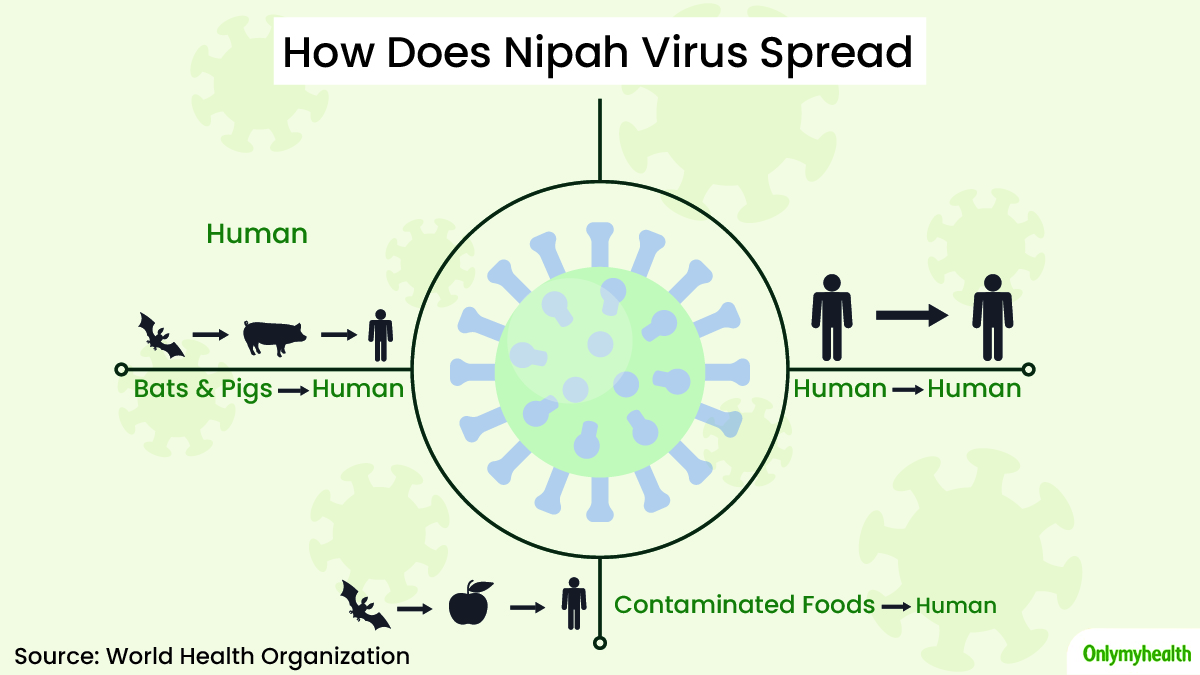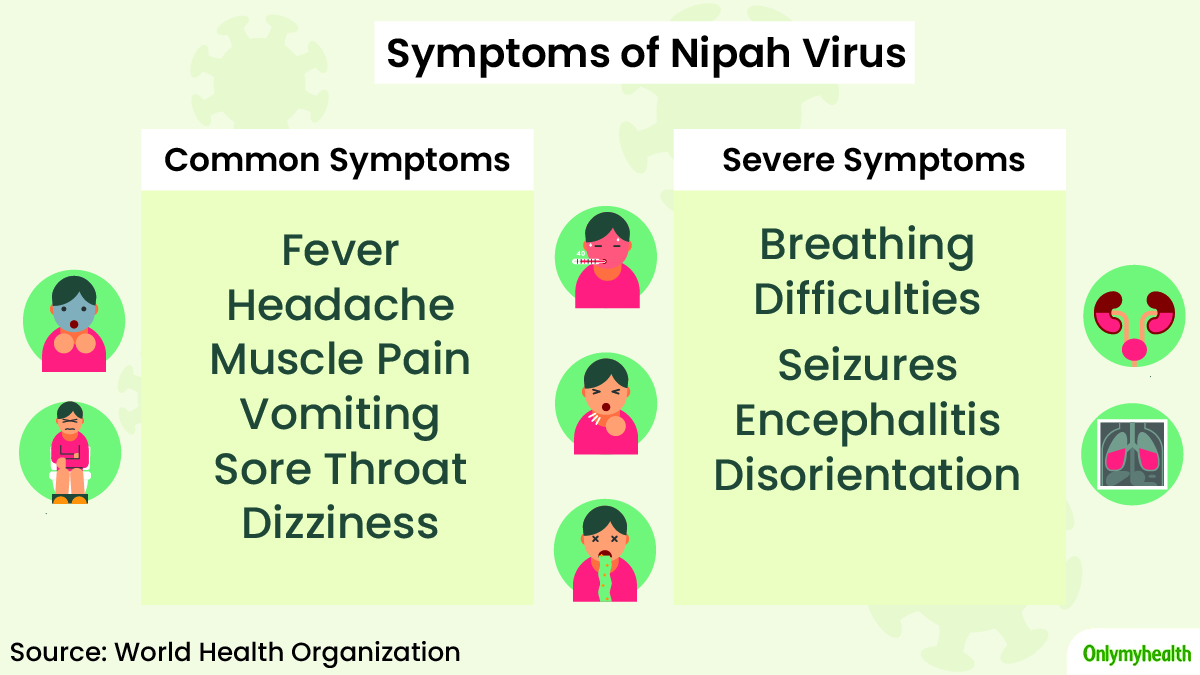
The Nipah virus is back in India and it is an alarming situation for the country. This zoonotic infection is transmitted mainly through animals like fruit bats and pigs but it can also be spread through human to human contact and contaminated food consumption. Kerala is witnessing the fourth outbreak of Nipah since 2018. Nipah virus Kerala latest news is that seven villages in the Kozhikode district are declared containment zones by the Kerala government, after witnessing two deaths in the district. Besides, four people have also tested positive for Nipah lately raising the alarm.
The government has also imposed restrictions including shutting down of some schools and offices in these zones to prevent further spread of the infection. While the initial outbreak has happened in Kerala, preventive measures are required to be taken across the country.
What is Nipah Virus?
The first outbreak of Nipah Virus dates back to 1999 in Singapore and Malaysia, causing more than 100 deaths. Lately, the two most affected Asian countries by the annual outbreak of NiV are India and Bangladesh. Dr J Anish Anand, Consultant Internal Medicine, Apollo Hospitals, Jubilee Hills shares that this zoonotic virus has a high fatality rate which is highly concerning. The chances of death due to nipah virus are 40% to 75% because there is no treatment for this infection. If a person gets infected with NiV, he/she should be kept under strict medical observation to minimise the transmission and manage symptoms.
Also Read: Nipah Virus Causing Panic As Two Patients Succumb In Kerala
Timeline Of Nipah In India

First outbreak(2001)- Siliguri, West Bengal
The first outbreak of NiV in the country appeared in January 2001 in Siliguri, West Bengal. The fatality rate in that year was 68% with about 66 confirmed cases and 45 deaths.
Second Outbreak(2007)- Nadia, West Bengal
The mortality rate during the second outbreak was 100% as all five NiV patients died within ten days of getting the infection.
Third Outbreak(2018)- Kozhikode, Kerala
In May 2018, South India witnessed the first outbreak of Nipah virus in the Kozhikode and Malappuram districts of Kerala state. The virus was declared contained within 10 days but the fatality rate was 90% as 17 out of 18 people died of NiV.
Fourth Outbreak(2019) - Kochi, Kerala
A student was tested positive for Nipah Virus in Kochi and recovered successfully causing zero fatality in that year.
Fifth Outbreak(2021)- Kozhikode, Kerala
The virus claimed the life of a 12YO boy in the fourth outbreak.
Sixth Outbreak(2023)- Kozhikode, Kerala
This year, a total of four NiV-positive cases have been detected so far, two of which died due to the severity of NiV and two others are put under strict medical supervision.
The medical department of the state has made all the necessary arrangements to prevent the outbreak and provide necessary aid to the infected patients. People who have come in contact with the infected and deceased are also being tested for NiV as a precautionary step.
Also Read: Nipah Virus And COVID-19: Is There A Connection? Know Symptoms, Cause, Diagnosis & Treatment
How Does Nipah Virus Spread?

The transmission of nipah virus takes place in three ways:
Animal to Human transmission- When a human comes in contact with an animal infected with NiV. The primary carriers of nipah in animals are pigs and fruit bats.
Human to human transmission- When a person comes in direct contact with an infected person or gets exposed to their body fluids.
Contaminated food consumption- When a person consumes food that has traces of the virus because of the presence of body fluids of an infected animal(such as fruits contaminated by an infected fruit bat)
However, most cases of Nipah virus infection in India are seen in healthcare settings and caregivers of infected patients.
What Are The Symptoms of Nipah Virus?
The signs and symptoms of nipah virus range from mild to severe varying from person to person. The symptoms begin to show within 4-14 days after being exposed to the virus. While some people develop mild fever, headache and cough, severe cases of nipah virus may experience swelling in the brain that may progress to coma, if not given immediate medical aid.
Refer to the infographic below to understand nipah virus symptoms.

How is Nipah Virus Diagnosed?
There are various tests that help in identifying NiV that include nasal swab test, RT-PCR test, urine test, blood test and cerebrospinal fluid test. Enzyme-linked immunosorbent assay(ELISA) test is done post recovery to identify antibodies.
The challenge here is that initial symptoms of Nipah virus are very common and people do not suspect it in the first place. Over time, the symptoms get severe making treatment difficult and that leads to unfortunate death.
Watch this video for prevention tips from a viral infection:
How to Prevent Nipah Virus?
People in affected areas must practise the following tips to stay preventive of this zoonotic infection:
- Wash your hands at regular intervals especially before eating.
- Avoid visiting places that may house pigs and areas where bats roost.
- Limit the consumption of fruits that come from unidentified sources or those found on the ground as they may have been bitten by a bat.
- Avoid coming in direct contact with a person showing symptoms of NiV.
- Maintain safety and hygiene practices when visiting hospitals.
Nipah virus is a highly contagious infection with no treatment available at the moment. Thus, it is important that we follow precautions in order to minimise the risk and contain the virus transmission.
Infographic Credits- Khushi Goel







